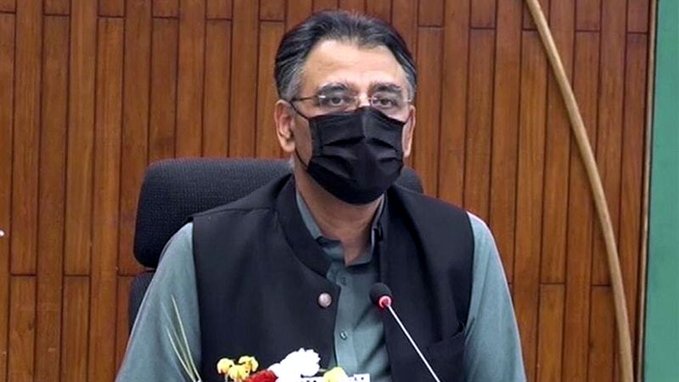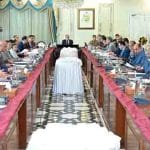ISLAMABAD, Apr 22 (APP): Minister for Planning, Development and Special Initiatives Asad Umar on Thursday said after stabilizing the country’s economy, the government was now working towards growth which would not not only high enough but sustained for a longer period.
Addressing the launching event of Pakistan Institute of Development Economics (PIDE)’s Reform Agenda for Accelerated and Sustained growth, he said the PIDE’s reform agenda for an accelerated and sustained growth came at very appropriate time.
Meanwhile Vice Chancellor PIDE, Dr. Nadeem Ul Haque, presented the salient features of the PIDE Reform Agenda for Accelerated and Sustained Growth.
According to PIDE, the task of preparing the Reform Agenda began with asking a central question; “Can Pakistan experience accelerated and sustained economic growth and If yes, how?”
To find an answer, the VC PIDE constituted a PIDE Growth Commission. The Commission comprised renowned local economists and development practitioners from all over the country. The commission also had an adequate representation of the female professionals.
The commission was supported by a secretariat at PIDE, consisting of 18 researchers led by Dr. Nadeem Ul Haque, Vice Chancellor PIDE.
The commission met several times to discuss and debate each aspect of the Growth Reform Agenda. The points on which consensus could not be achieved were taken off the report while others were added. The final Growth Reform Agenda reflects the consensus view of the PIDE Growth Commission.
The reform agenda mentions that an increasing labour force is entering the market due to youth bulge. To ensure gainful employment for the labour force entering the market and to sustain the country’s high level of debt the required GDP growth rate is 7-9% per annum.
The document takes pain to stress that this is the required growth and not a projected rate.
The Agenda takes the view that the development model that Pakistan has been using since the sixties focuses primarily on investment in hardware led by infrastructure.
This model, argues the agenda, developed by Dr. Mahbub ul Haq and the then Harvard Advisory group in the ‘60s was correct for those times when the country needed investment infrastructure. However, with change dynamics, now the model needs to undergo a paradigm shift – the country now needs to shift its focus from investment in hardware to investment in the software of the society. This software is the quality human capital, innovation, R & D, and most importantly the laws, rules, and processes that further economic activity.
The Reform Agenda points out that the present laws, rules, and processes constrain the generation of ideas and carrying out overall economic activity.
The agenda citing several frictions in carrying out entrepreneurial activity calls for a revamp of the laws and processes that hamper economic activity.
The examples of frictions include; 09 procedures are required to get a permit which cost around 9 percent of the construction value, land developers need 22 NOCs from different agencies to proceed with land development, 45 steps are required to lay an optic fiber for internet connectivity and on average, a firm spends 577 hours and wades through 47 procedures to pay the several taxes that it is required to pay.
The reform agenda argues that amending laws and processes to significantly reduce these frictions will enormously boost growth by increasing productivity and hence investment – the two key drivers of growth.
Therefore, argues the Agenda, to begin the journey on a high growth trajectory requires a well-functioning state – entire public service including Civil Service, Judiciary, regulatory bodies, and local governments, etc will have to be reformed to deliver.
Follow the PNI Facebook page for the latest news and updates.








